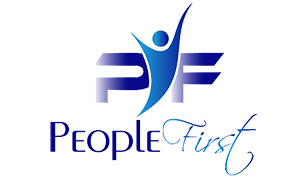
Improving your effectiveness in todays complex world.
It takes courage to be a leader in today’s workplace. Leaders live in an ever-changing world made more complex by the quantity data, social media, consumerism, workforce diversity and enhanced technology.
Gone are the days when the leader was an all-knowing manager with unwavering confidence, a resolute sense of direction and a keen ability to determine the right solutions.
These huge shifts have created a more complex workplace for leaders than in the past. This complexity poses land mines for leaders, particularly because:
- Root causes to problems might be unknown or not easily discernible
- A single solution might not exist
- No one person has the solution to the problem
In these circumstances, leaders are far less effective when they address symptoms of the
problem, assert only their opinion or point of view, fail to capture multiple perspectives to solve the problem or focus on only one solution.
Leading successfully through the never-ending maze of complexity requires a bold, new approach to identify, implement and sustain effective solutions:
- Begin with listening, versus acting. Identify compelling questions that spark dialogue among diverse stakeholders who are closest to the problem or situation. For example: What key events led up to this situation? What does the data suggest? What are the problems, barriers and/or challenges that the team is experiencing? How do these challenges affect the team’s or organization’s ability to produce intended outcomes?
- Demonstrate curiosity. Explore themes and patterns that begin to emerge from dialogue with stakeholders. For example, what factors seem to contribute most to the situation: failed processes, inadequate technology, human error, etc.? Are there critical intersections in the work process where problems seem to form, grow, and mature? From these themes, seek ideas from stakeholders on interventions that could resolve the situation, whether in whole or in part.
- Take a paced, thoughtful approach toward the solution. Even if a clear solution hasn’t emerged, consider tests of change to study the effects of different interventions. Ensure that each test of change has an objective and baseline data. Once the test has been shown, determine whether the objective was met and if improvement was both measured and experienced.
- Champion learning. From the tests of change, determine what was learned and which solutions should be implemented on a fuller scale to address the situation.
To evolve their leadership approach in complex situations, leaders can advance their self-awareness by asking;
- How do I foster a safe environment where diverse, honest perspectives and recommendations can be shared?
- Do I tend to listen and learn, or tell and act?
- How do I encourage opposing views and creative deviance from the norm?
- How will I make the time to experiment, potentially fail, and extract lessons learned when pursuing the right solution to a complex situation?
- How can I cultivate a work environment where solutions emerge and failure is a natural occurrence on the road to success?
